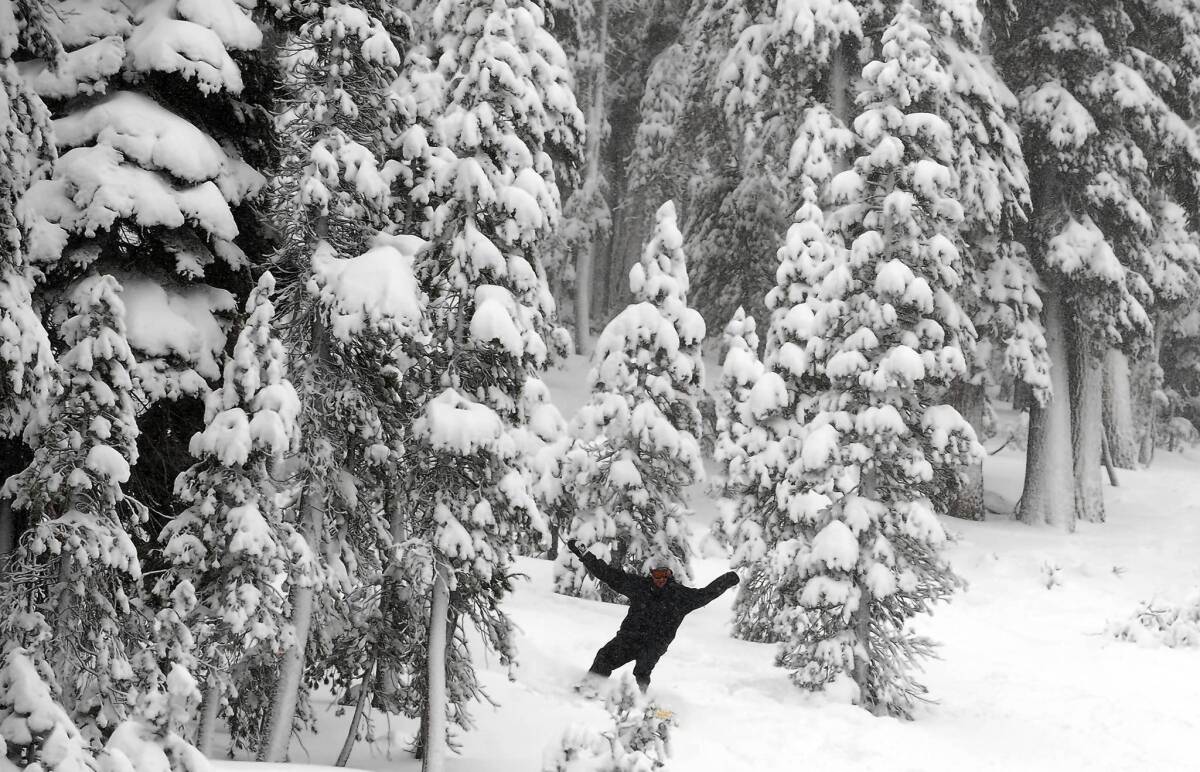Sahara Desert dust affects California water supply, study finds

- Share via
High-altitude dust blown thousands of miles across the Pacific from Asian and African deserts can make it rain and snow in the Sierra Nevada, according to new research that suggests tiny particles from afar play a role in California’s water supply.
The study, published Thursday in the online edition of the journal Science, grew out of researchers’ questions about two similar Sierra storms in winter 2009. Even though the storm systems carried the same amount of water vapor, one produced 40% more precipitation than the other. When scientists analyzed ground samples of the rain and snow dropped by the wetter storm, they found an abundance of Asian dust.
Two years later, a science team spent days flying through Sierra storm clouds on a government research plane, collecting an array of atmospheric samples at the same time that instruments below in the Tahoe National Forest took ground measurements. The results: When dust and tiny biological particles from halfway around the globe were detected in the clouds swirling above the Sierra peaks, there was more rain and snow.
“There was this sort of magical switch,” said Kim Prather, a UC San Diego atmospheric chemist and coauthor of the paper. “The days with dust you see one thing, and the days without dust you see a different thing.”
Previous research by one of the paper’s 12 authors had shown that windblown mineral dust transported long distances acts as a seed for atmospheric ice that is key to forming a significant amount of precipitation.
But the scientists said the Sierra study is the first direct documentation that dust and biological particles from as far away as the Sahara Desert and the deserts of China and Mongolia can help wring water out of the sky in the Western United States.
“The fact that something happening on another continent in terms of dust generation could influence precipitation patterns in the U.S — that’s a challenging problem,” said Marty Ralph, a coauthor and research meteorologist with the National Oceanic and Atmospheric Administration.
Researchers identified the source of the airborne dust by its chemical fingerprint and by looking at satellite data and numerical weather models that track the global trajectory of air masses. The Sierra range is the first thing the particles hit in California. Whether they have the same effect on precipitation in other West Coast mountains, such as the Cascades, or more interior ranges, such as the Rockies, is unknown.
Ralph was initially dubious that aerosols — as dust and other atmospheric particles are known — have much of an impact on whether a cloud gives up water or holds on to it.
But the difference in the output of the 2009 storms “was a bit of a scientific epiphany,” he said. “I came into this very skeptical and have come to where I am now, coauthoring a paper that’s saying aerosols can have a significant impact.”
The next step, he added, is to quantify that precipitation effect.
The Sierra research was part of a three-year field study, called CalWater, that investigated influences on California rain and snow. “I think it has huge implications,” said Guido Franco of the California Energy Commission, which funded the program. “It may counteract some of the effects of a warming climate.”
Scientists predict that, in general, Earth’s wet regions will become wetter with global warming and dry regions will become drier. That could mean more windblown desert dust in the atmosphere and, if the Sierra results bear out, more precipitation in the Northern California mountains that provide the state with roughly a third of its water supply.
Marshall Shepherd, a University of Georgia research meteorologist and president of the American Meteorological Society, was not prepared to go that far. “I don’t know if we can make that leap yet and say that [more dust] is going to lead to large global changes in precipitation patterns,” Shepherd said. “There are so many other competing factors.”
More to Read
Sign up for Essential California
The most important California stories and recommendations in your inbox every morning.
You may occasionally receive promotional content from the Los Angeles Times.











